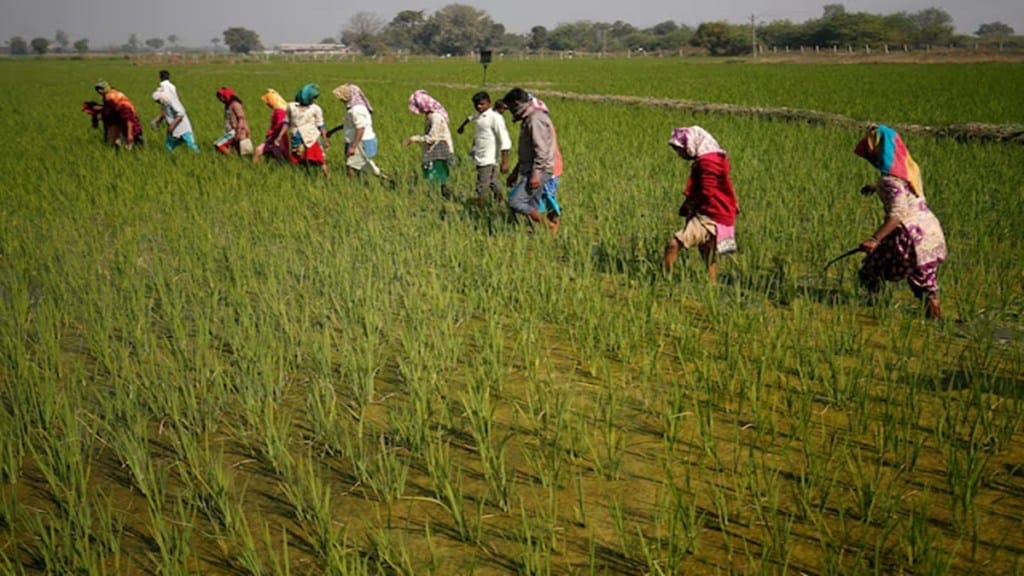Surplus rainfall since last month across parts of northwest India and continuation of showers this month due to stalled monsoon withdrawal have caused losses to kharif crops in many states, especially Maharashtra, Punjab and Rajasthan.
With rains still being reported across western and eastern parts of the country, crop harvesting has been delayed at several places. Agriculture ministry sources said that an assessment of the impact of crop damage is being done based on reports from the states.
The productivity of key crops which would be hit include paddy, pulses, cotton and sugarcane.
Assessment of state-wise destruction
The ministry may have to revise downwards the projection of kharif foodgrain output of a record 171 million tonne (MT) for 2025-26 crop year (July-June), compared with 168 MT in the last season.
The extent of crop damage is believed to be the largest in Maharashtra, with half of its crop area having been impacted because of submergence.
Dattatreya (Mama) Bharane, agriculture minister of Maharashtra, said heavy rains have caused huge losses to kharif crops in the state where 6.8 million hectare (mha), out of the state’s sown area of 14.4 mha has been adversely impacted. “The crop investigative report for the month of September has reached the final stage; the relief fund will be announced by next week,” Bharane told FE.
He said a sum of Rs 2,215 crore is being given to the farmers on the basis of assessment based in August while major crops impacted in the states include soybean, maize, cotton, urad, tur, moong, vegetables, fruit crops, millet, sugarcane and onion.
Jaswant Singh, director of agriculture and farmers welfare, Punjab, said that currently the focus of the state government is to provide relief to farmers while according to initial projections 0.5 million hectare (Million hectare) out of 3.2 Mha crop area has been impacted by the floods.
The Punjab government has started to distribute free wheat seeds for the forthcoming rabi season.
Impact on national output and economic outlook
In West Bengal, the largest producer of rice, the recent spell of rains has had a mixed impact on the standing paddy crop“At present, the overall picture is balanced — rain has supported crop growth in many regions, but the situation in waterlogged fields is a concern. Much will depend on how the weather behaves in the coming days, as prolonged rains could tilt the balance towards crop stress,” Suraj Agrawal, CEO, Rice Villa Group, a Kolkata-based rice exporter, said
With large parts of Rajasthan having witnessed unexpected showers in the last one month, leaving harvested crops exposed to moisture in the fields, the state agriculture department has announced that farmers covered under the crop insurance scheme will be compensated if damage occurs within fourteen days of harvesting.
Overall rainfall during monsoon season (June-September) across the country was ‘above normal’ rainfall of 108% of the benchmark long period average (LPA) with 91% of geographical reporting ‘normal to surplus rainfall. Month-wise rainfall was in June (109%), July (105%), August (109%) and September (115%) of the LPA, respectively.
As per the India Meteorological Department’s forecast on Sunday, due to an intense western disturbance it is likely to cause heavy to very heavy rainfall over Northwest India over next two days. There are reports of heavy rainfall over West Bengal, Sikkim and Meghalaya on Sunday.
Taking into consideration the impact of flood and excessive rainfall major across regions which has impacted kharif crops, the government recently had projected a modest growth of 2.4% in foodgrain production to 362.5 million tonne (MT) for the 2025-26 crop year (July -June) compared to 353 MT of production in 2024-25. This is despite record kharif sowing of crops at 111.08 Mha reported this year.
Crisil Intelligence in a recent report had stated that persistent heavy rainfall through August in Punjab, Haryana, Karnataka, Andhra Pradesh, and Telangana have impacted several kharif crops such as paddy, cotton, bajra, cotton, maize and gram.
The gross value added (GVA) in “agriculture and allied sectors” recorded a healthy growth of 3.7% in the first quarter of the current fiscal. In 2024-25 too, the sector performed well with GVA growth of 4.6%.
Economists are yet to make any assessment of the impact of kharif crop damage on GVA, or the rural economy that is believed to be looking up. GVA is a function of not only crop output, but prices fetched by farmers and livestock breeders, where government procurement and market dynamics will also play crucial roles.


